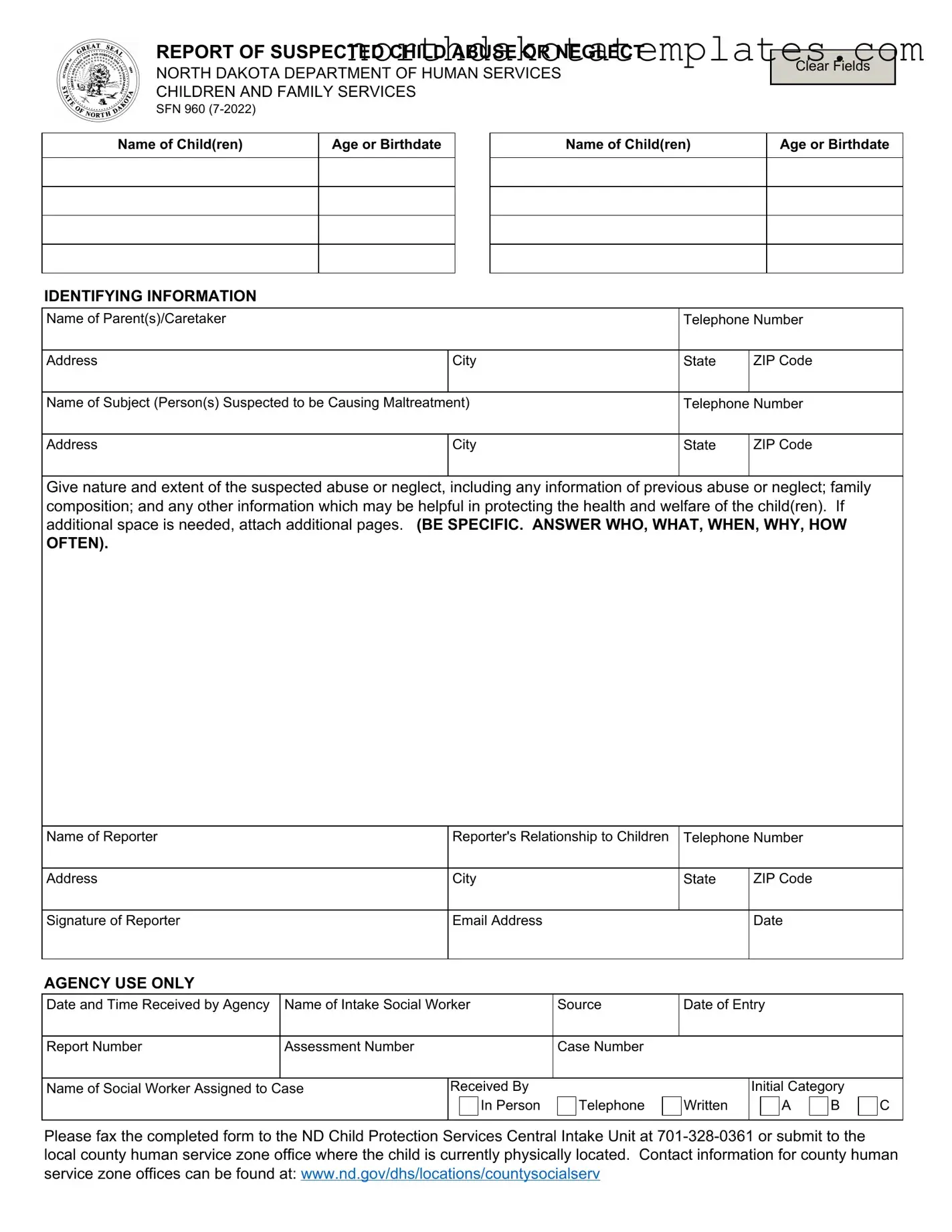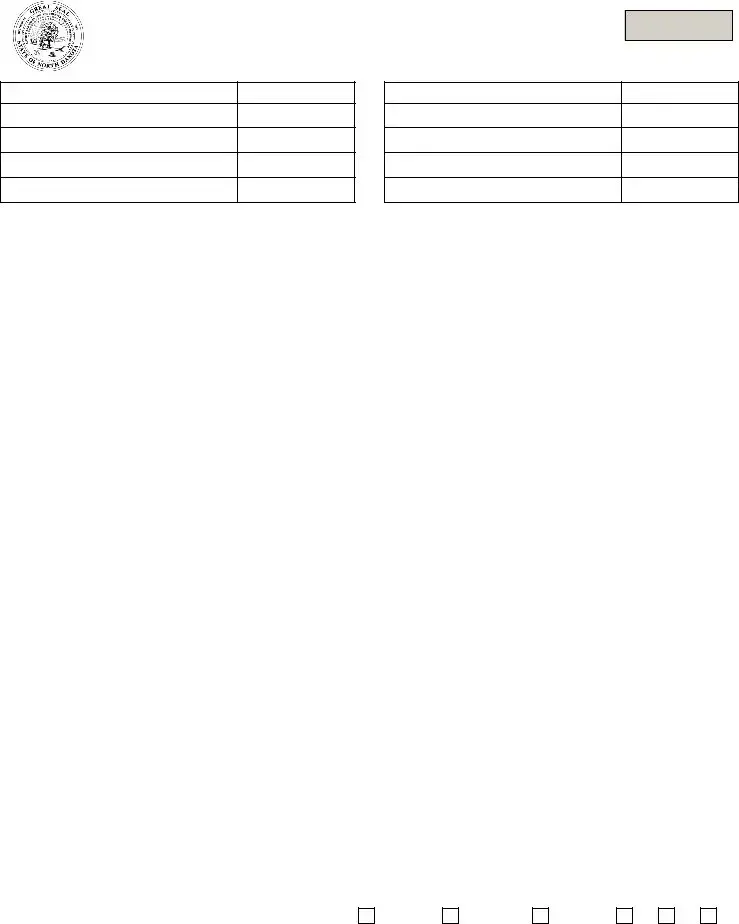What is the purpose of the SFN 960 form?
The SFN 960 form is used to report suspected child abuse or neglect in North Dakota. It serves as a formal document to provide information to the Department of Human Services, specifically the Children and Family Services division. By filling out this form, individuals can help ensure that children at risk receive the necessary attention and protection from potential harm.
Who should fill out the SFN 960 form?
The form can be completed by anyone who suspects that a child is being abused or neglected. This includes family members, teachers, healthcare professionals, and even neighbors. If you have concerns about a child's safety or well-being, it is your responsibility to report those concerns using this form.
What information is required on the SFN 960 form?
When filling out the SFN 960, you will need to provide identifying information about the child or children involved, such as their names and ages. Additionally, you must include details about the suspected abuser, including their name and contact information. The form also requires a description of the suspected abuse or neglect, including any relevant history and the family composition. Being specific and thorough in your answers will aid in the investigation process.
How should I submit the SFN 960 form?
Once you have completed the SFN 960 form, it should be faxed to the North Dakota Child Protection Services Central Intake Unit at 701-328-0361. Alternatively, you can submit it to the local county human service zone office where the child is currently located. It is crucial to ensure that the form is submitted promptly to facilitate a timely response.
What happens after I submit the SFN 960 form?
After the form is submitted, it will be reviewed by an intake social worker. They will assess the information provided and determine the appropriate next steps. This may include an investigation into the allegations of abuse or neglect. Your report is taken seriously, and confidentiality is maintained throughout the process to protect both the child and the reporter.

